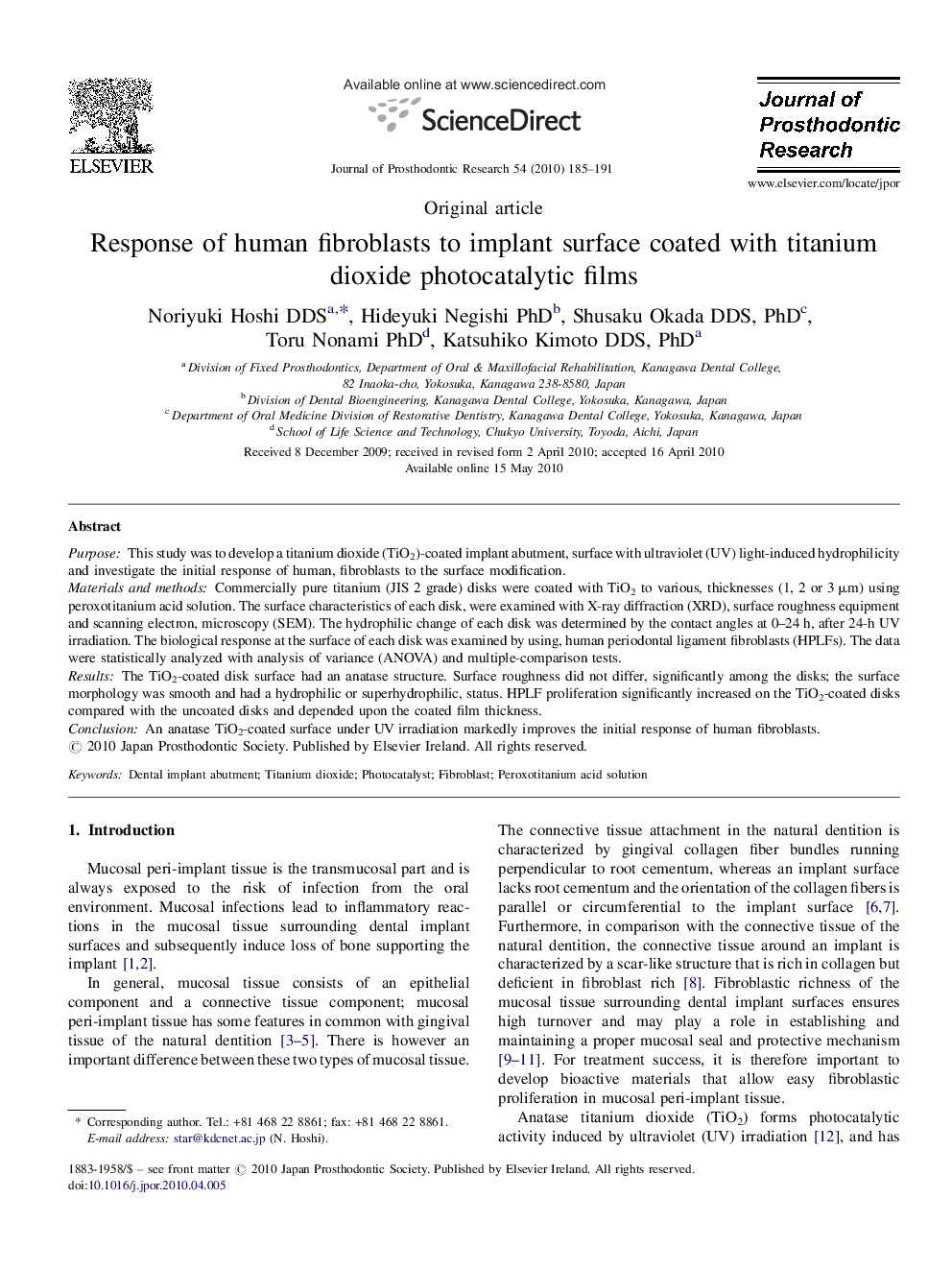| Article ID | Journal | Published Year | Pages | File Type |
|---|---|---|---|---|
| 3160731 | Journal of Prosthodontic Research | 2010 | 7 Pages |
PurposeThis study was to develop a titanium dioxide (TiO2)-coated implant abutment, surface with ultraviolet (UV) light-induced hydrophilicity and investigate the initial response of human, fibroblasts to the surface modification.Materials and methodsCommercially pure titanium (JIS 2 grade) disks were coated with TiO2 to various, thicknesses (1, 2 or 3 μm) using peroxotitanium acid solution. The surface characteristics of each disk, were examined with X-ray diffraction (XRD), surface roughness equipment and scanning electron, microscopy (SEM). The hydrophilic change of each disk was determined by the contact angles at 0–24 h, after 24-h UV irradiation. The biological response at the surface of each disk was examined by using, human periodontal ligament fibroblasts (HPLFs). The data were statistically analyzed with analysis of variance (ANOVA) and multiple-comparison tests.ResultsThe TiO2-coated disk surface had an anatase structure. Surface roughness did not differ, significantly among the disks; the surface morphology was smooth and had a hydrophilic or superhydrophilic, status. HPLF proliferation significantly increased on the TiO2-coated disks compared with the uncoated disks and depended upon the coated film thickness.ConclusionAn anatase TiO2-coated surface under UV irradiation markedly improves the initial response of human fibroblasts.
